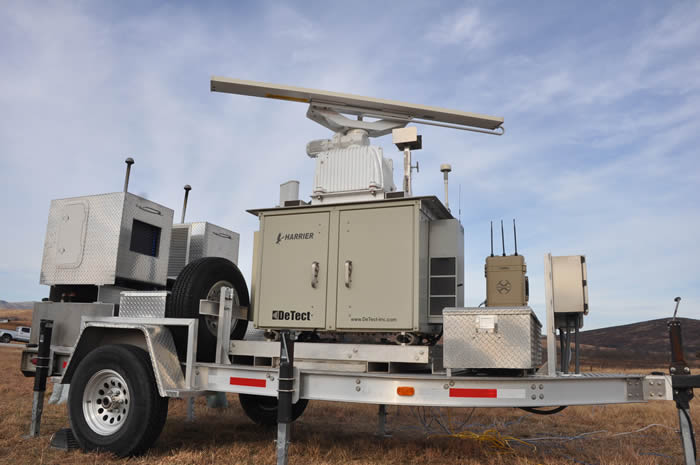WSi News2018-01-29 17:45:12
DeTect's HARRIER system makes its Maneuver Fires Integrated Experiment (MFIX) debut
While other counter unmanned aerial vehicle measures are being developed at the Maneuver Fires Integrated Experiment (MFIX), the creators of the HARRIER (DeTect, Inc.) are here just to show what they have been doing for years. Developers of HARRIER say they originally built the systems to protect Air Force bases from birds. The seemingly innocuous creatures created problems when they crossed paths with an aircraft. Without spending a lot of money, the HARRIER was created - a low-cost system that could detect and track small birds. With the growing threat of unmanned aerial systems, the developers of the HARRIER took their system and adapted it to meet a new mission.
"We were already doing these things many years ago," said Adam Kelly, chief technology officer for DeTect. "The team came together in 2016 and we rapidly moved to where we can integrate things together. In May we were able to demonstrate how those things can be put together. Now it's working together as a team to fuse those elements together without spending billions and billions of dollars to get the job done. It's not trivial, but we built on the core technology that we already had." The traditional HARRIER system has been available to consumers for some time but made its MFIX debut December 2017 with the goal of putting a Soldier behind the controls to get their feedback.
"It's one thing to say you can make it work in a lab it's another to bring it out into the real world and execute it against vehicles and something as close as possible to an operational scenario," said Kelly. The system uses a thermal imaging camera so the radar can track a target across the landscape in addition to having eyes on target for a visual confirmation said Kelly. The thermal allows the user to track targets at night and also in inclement weather. Developers of HARRIER are working on integrating maneuver aviation fires integrated application (MAFIA), a communications system, to enable Soldiers to disrupt the system on a drone. Additionally the HARRIER team is working on the integration of multiple systems to exchange automatically.
The goal is to reduce the workload so that the Soldier sitting in front of the system can "push a button" and the system will effectively disable the target.
The end result is to integrate the multiple parts an easy-to-use system within the overall system. The HARRIER jammer differs from other counter-UAS platforms in that it is able to operate directional and omni-directional depending on the need. Directional negation allows the user to see where friendly and enemy forces are on a screen and choose which nodes to defeat to avoid doing collateral damage. Omni-directional negation sends an umbrella defense, negating all UAVs within its radius. “It's more like if you can think of a normal incandescent light bulb, that's omni- directional," said Taylor Colapret, systems engineer for Sierra Nevada Corporation. "A spotlight is directional."
"You can have a small cadre of Soldiers who can control that entire area," he said. "They can see the big picture and they can affect negation from any point within that landscape. That's absolutely the goal."
For more information contact:
